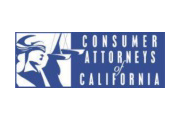This is not the first time I’ve written about the dangers of the San Francisco Cable Car. The statistics for accidents and costs to the city of San Francisco are staggering. We have to ask, ‘Is it worth it to keep this antique and nostalgic form of transportation available to the masses of tourists and San Francisco locals?’
The revenue generated to San Francisco, either directly to the MUNI or indirectly, seems a bit hard to get a grasp on. If we just look at the numbers people are paying to ride the cable cars, versus then payout the City makes for the cable cars, the City is obviously not in this for the money. Then, when we add the money paid out by the City for cable car accidents, this bottom dollar figure simply fails to make sense.
Do the riders of the cable car have any idea how many accidents occur on a regular basis? The sad truth about our lovely cable cars is that this quaint method of local travel has a hidden dark side. San Francisco Cable Car lawsuits cost the City millions each year due to broken bones, severed feet, and bad bruises as a result of accidents between the cables cars and other vehicles and pedestrians.
In fact, cable cars average about one accident per month! They routinely rank among the most accident-prone mass transportation modes in the country per vehicle mile traveled annually, according to the U.S. Department of Transportation. Over the last 10 years, city officials have reported 126 accidents injuring 151 people.
After the latest serious accident which I wrote about a few months ago where the Cable Car sent seven people to the hospital, another cable car has since slammed to an unexpected stop after hitting a small bolt in the track. How could this same scenario occur again? As before it was negligence on MUNI’s part. A large metal bolt on the track causes the cable car to stop in its tracks quickly.
Track maintenance is of utmost importance for cable car safety. These accidents could have and should have been prevented.
As the rate of $8 million to settle almost 50 claims, I’m not sure that MUNI is doing its job when it comes to MUNI safety. Of course, the City also spends an additional $4 million on all of its MUNI vehicles including electric streetcars and busses. Sadly, the cable cars, which only take up eight miles of track, produce a disproportionate amount of accident-related costs.
Since the San Francisco Cable Cars are cherished by many and add such character to the City, it’s about time that MUNI takes better care of its moving antique monuments, enforces some of its own rules, and helps the cable car aspire to the safety level of twenty-first-century mass transportation.
I am glad that Mayor Lee agrees that improvements are needed to the cable cars that began operation in 1893. He believes,
the iconic cable cars of San Francisco are a National Historic Landmark and we work every day to make them safer. While accidents and injuries are down from just a few years ago, we are always working to improve the system as a whole.
What does MUNI have to say? Unfortunately, Paul Rose, a spokesman for the city agency that oversees San Francisco mass transit is in a bit of denial in his statement that
the 19th Century technology of the cable cars does pose some challenges. While one accident is too many and we’re always working to improve safety, these incidents are rare.
As a San Francisco MUNI Accident Attorney, I would love to see our unique and one-of-a-kind manually operated cable-car system upgraded. Public safety is number one. We are not in the 1800s anymore hauling goods for businesses up steep hills. The San Francisco Cable Cars are a cross between an amusement park ride and a local business commuting source, both of which keep the City of San Francisco thriving.
Ask any tourist to San Francisco what their top activities were while visiting. Riding the cable cars is analogous to taking a Gondola down the river in Venice, Italy. The tourists line up in their shorts in the cold foggy summers just for their ride.
I’ve ridden the cable cars myself and am always astounded watching the driver (a.k.a. the Brakeman). It takes such strength to operate these cars, despite the underground cable system. I’ve also witnessed firsthand the jolt that is felt as a rider when just traveling along and then stopping (even under normal circumstances).
Do we need to start issuing injury warnings at the cable car stops as we do shark warnings at some of the North Bay beaches? No, I don’t think so. I think it’s time for the City of San Francisco and the MUNI to do something about this perpetuating problem.





